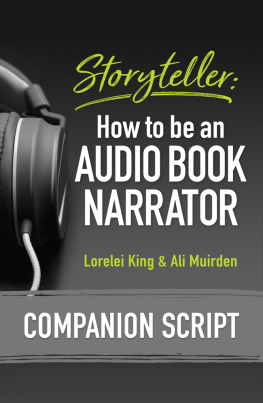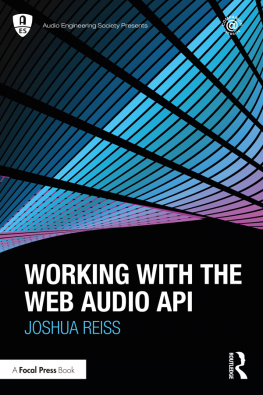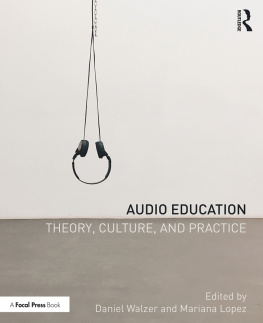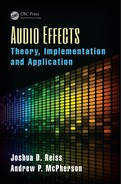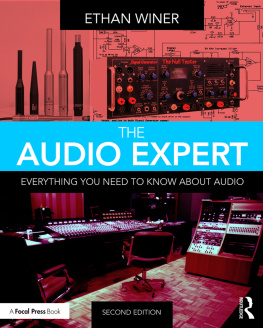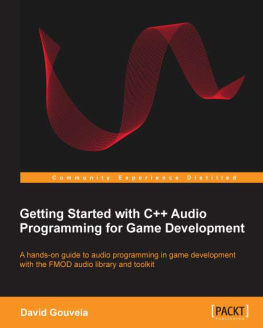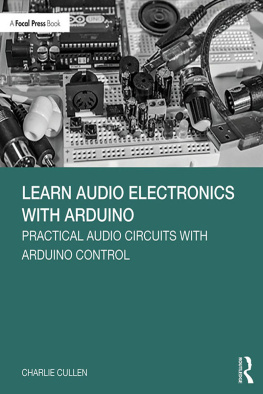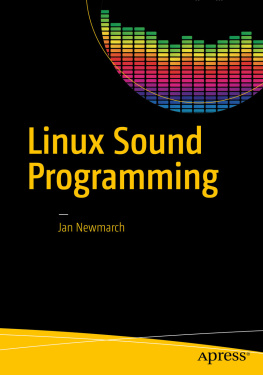
An Introduction to Audio Description
An Introduction to Audio Description is the first comprehensive, user-friendly student guide to the theory and practice of audio description, or media narration, providing readers with the skills needed for the effective translation of images into words for the blind and partially-sighted.
A wide range of examples, from film to multimedia events and touch tours in theatre, along with comments throughout from audio description users, serve to illustrate the following key themes:
the history of audio description
the audience
the legal background
how to write, prepare and deliver a script.
Covering the key genres of audio description and supplemented with exercises and discussion points throughout, this is the essential textbook for all students and translators involved in the practice of audio description. Accompanying film clips are also available at: https://www.routledge.com/products/9781138848177 and on the Routledge Translation Studies Portal: http://cw.routledge.com/textbooks/translationstudies/ .
Louise Fryer is a teaching fellow at University College London and describes for the National Theatre of Great Britain and VocalEyes. For many years, she presented Afternoon on 3, Live in Concert and Proms for BBC Radio 3.
Translation Practices Explained
Series Editor: Kelly Washbourne
Translation Practices Explained is a series of coursebooks designed to help self-learners and students on translation and interpreting courses. Each volume focuses on a specific aspect of professional translation practice, in many cases corresponding to courses available in translator-training institutions. Special volumes are devoted to well consolidated professional areas, to areas where labour-market demands are currently undergoing considerable growth, and to specific aspects of professional practices on which little teaching and learning material is available. The authors are practicing translators or translator trainers in the fields concerned. Although specialists, they explain their professional insights in a manner accessible to the wider learning public.
These books start from the recognition that professional translation practices require something more than elaborate abstraction or fixed methodologies. They are located close to work on authentic texts, and encourage learners to proceed inductively, solving problems as they arise from examples and case studies.
Each volume includes activities and exercises designed to help learners consolidate their knowledge (teachers may also find these useful for direct application in class, or alternatively as the basis for the design and preparation of their own material.) Updated reading lists and website addresses will also help individual learners gain further insight into the realities of professional practice.
Titles in the series:
Translating Childrens Literature
Gillian Lathey
Localizing Apps
Johann Roturier
User-Centered Translation
Tytti Suojanen, Kaisa Koskinen, Tiina Tuominen
Translating for the European Union Institutions 2e
Emma Wagner, Svend Bech, Jess M. Martnez
Revising and Editing for Translators 3e
Brian Mossop
Audiovisual Translation
Frederic Chaume
Scientific and Technical Translation Explained
Jody Byrne
Translation-Driven Corpora
Federico Zanettin
Subtitling Through Speech Recognition
Pablo Romero-Fresco
Translating Promotional and Advertising Texts
Ira Torresi
Audiovisual Translation, Subtitling
Jorge Diaz-Cintas, Aline Remael
Medical Translation Step by Step
Vicent Montalt, Maria Gonzlez-Davies
Notetaking for Consecutive Interpreting
Andrew Gillies
Translating Official Documents
Roberto Mayoral Asensio
Conference Interpreting Explained
Roderick Jones
Legal Translation Explained
Enrique Alcaraz, Brian Hughes
Electronic Tools for Translators
Frank Austermuhl
Introduction to Court Interpreting
Holly Mikkelson
For more information on any of these titles, or to order, please go to www.routledge.com/linguistics
An Introduction to Audio
Description
A practical guide
Louise Fryer

First published 2016
by Routledge
2 Park Square, Milton Park, Abingdon, Oxon OX14 4RN
and by Routledge
711 Third Avenue, New York, NY 10017
Routledge is an imprint of the Taylor & Francis Group, an informa business
2016 Louise Fryer
The right of Louise Fryer to be identified as author of this work has been asserted by her in accordance with sections 77 and 78 of the Copyright, Designs and Patents Act 1988.
All rights reserved. No part of this book may be reprinted or reproduced or utilised in any form or by any electronic, mechanical, or other means, now known or hereafter invented, including photocopying and recording, or in any information storage or retrieval system, without permission in writing from the publishers.
Trademark notice: Product or corporate names may be trademarks or registered trademarks, and are used only for identification and explanation without intent to infringe.
British Library Cataloguing-in-Publication Data
A catalogue record for this book is available from the British Library
Library of Congress Cataloging-in-Publication Data
Names: Fryer, Louise, author.
Title: An Introduction to audio description : a pratical guide / by Louise Fryer.
Description: Milton Park, Abingdon, Oxon ; New York, NY : Routledge, [2016] | Series: Translation Practices Explained
Identifiers: LCCN 2015046903| ISBN 9781138848153 (hardback : alk. paper) | ISBN 9781138848177 (pbk. : alk. paper) | ISBN 9781315707228 (ebook : alk. paper)
Subjects: LCSH: Translating and interpretingTechnological innovations. | Multimedia systemsResearch. | Audio-visual equipmentTechnological innovations.
Classification: LCC P306.93 .F79 2016 | DDC 418/.020871dc23
LC record available at http://lccn.loc.gov/2015046903
ISBN: 978-1-138-84815-3 (hbk)
ISBN: 978-1-138-84817-7 (pbk)
ISBN: 978-1-3157072-2-8 (ebk)
Typeset in Times New Roman
by Swales & Willis Ltd, Exeter, Devon, UK
Gower: Whats dumb in show, Ill plain with speech.
(W. Shakespeare, Pericles, Act III, Prologue)
Audio description (AD) is increasingly recognised as a constituent part of audiovisual translation studies (AVT), complementing subtitling for the deaf and hard of hearing (SDH) by providing access to media for blind and partially sighted people. Although many academic articles and a number of books have been published on AD in recent years, to the best of the authors knowledge, there is no practical manual for students combining the results of such research with practical advice. This book aims to fill the gap, targeting the growing readership in AVT at universities. This includes students and researchers and those responsible for delivering AD courses. This book may also be of interest to the general public and anyone with an interest in linguistics, psycholinguistics, visual perception, media, film or disability. Although it focuses on AD in the UK, as that is the location of my own experience, attempts have been made to refer to description across Europe, the United States and elsewhere whenever possible.
Next page

